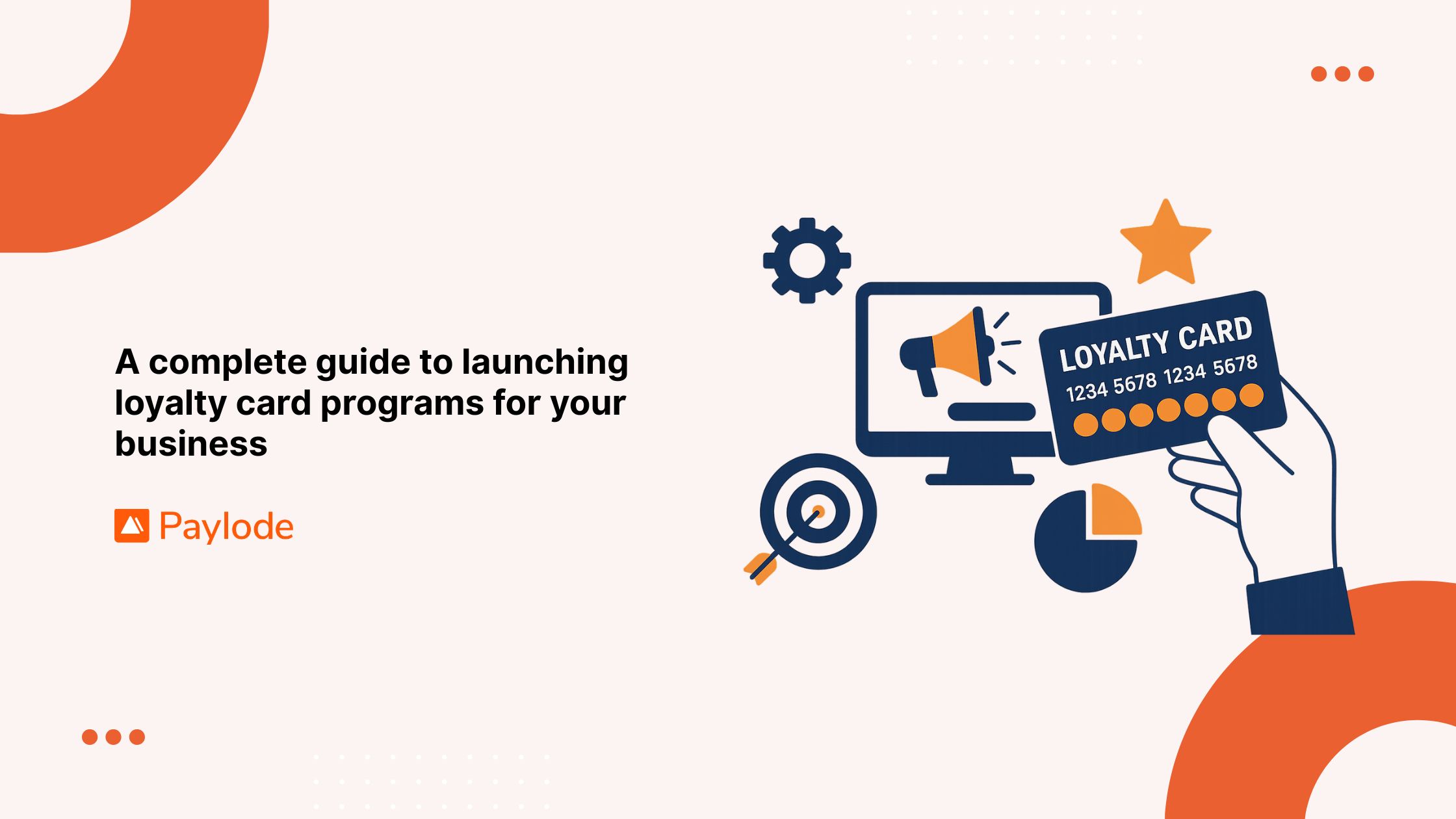In today's competitive business environment, customer retention has become a vital focus for companies striving to maintain and grow their market share. Tailoring experiences to individual customers using data-driven retention efforts can significantly enhance customer satisfaction and loyalty. This article explores the importance of personalization in customer retention programs and how businesses can leverage data to create more effective and engaging customer experiences.
Key takeaways
- Personalizing customer experiences is essential for improving customer satisfaction and loyalty.
- Utilizing data analytics helps businesses understand customer behavior and preferences.
- Implementing data-driven retention strategies can significantly reduce churn rates and increase lifetime customer value.
The importance of personalization in customer retention
Personalization is no longer just a nice-to-have feature; it's a necessity in any effective customer retention strategy. Customers today expect businesses to understand their needs and preferences and to provide relevant and timely experiences. Personalized experiences can make customers feel valued and understood, which fosters loyalty and encourages repeat purchases.
The role of personalization in customer satisfaction and loyalty
Personalized experiences contribute significantly to customer satisfaction by making interactions more relevant and engaging. When customers feel that a business understands their individual needs, they are more likely to develop a positive association with the brand. This emotional connection can lead to increased loyalty and a higher likelihood of repeat business.
Types of personalization in customer retention programs
- Content personalization: Tailoring the content customers see based on their past behavior, interests, and preferences can enhance their engagement with your brand. For example, personalized recommendations on e-commerce sites or customized email newsletters.
- Communication personalization: Addressing customers by their names and sending them personalized messages and offers based on their purchase history and preferences can make them feel special and valued.
- Product personalization: Offering customized products or services that cater to the unique needs and preferences of individual customers can significantly enhance their satisfaction and loyalty.
Utilizing data analytics for tailored experiences
Data is the cornerstone of any effective personalization strategy. By collecting and analyzing customer data, businesses can gain insights into customer behavior, preferences, and needs, which can be used to deliver tailored experiences.
Collecting customer data
To personalize customer experiences effectively, businesses need to collect various types of data, including:
- Demographic data: Information such as age, gender, location, and occupation can help segment customers and tailor offers accordingly.
- Behavioral data: Tracking customer interactions with your website, app, or emails can provide insights into their preferences and interests.
- Purchase history: Analyzing past purchases can reveal patterns and trends that can be used to make relevant recommendations.
- Feedback: Gathering feedback through surveys, reviews, and social media can provide valuable insights into customer satisfaction and areas for improvement.
Analyzing customer data
Once the data is collected, businesses need to analyze it to uncover patterns and trends. Data analytics tools and techniques such as machine learning, predictive analytics, and data mining can help businesses understand customer behavior and preferences at a deeper level.
Creating customer segments
Customer segmentation involves dividing your customer base into distinct groups based on shared characteristics. This enables businesses to tailor their marketing efforts and offers to each segment's specific needs and preferences. Common segmentation criteria include:
- Demographics: Age, gender, income, education level, etc.
- Psychographics: Lifestyle, values, interests, etc.
- Behavior: Purchase history, browsing behavior, response to marketing campaigns, etc.
Implementing data-driven retention strategies
With insights gained from data analytics, businesses can implement targeted retention strategies to enhance customer satisfaction and reduce churn. Here are some effective data-driven retention strategies:
- Personalized marketing campaigns: Using customer data to create targeted marketing campaigns can increase their relevance and effectiveness. For example, sending personalized email offers based on a customer’s past purchases or browsing behavior.
- Loyalty programs: Designing loyalty programs that reward customers for their continued patronage can encourage repeat business. Personalizing rewards based on customer preferences can make the programs more appealing.
- Predictive analytics for churn prevention: By analyzing customer data, businesses can identify early signs of potential churn and take proactive measures to retain at-risk customers. This could involve personalized offers, tailored communication, or improved customer service.
- Customized customer support: Using customer data to understand their history and preferences can enable support teams to provide more personalized and effective assistance, enhancing the overall customer experience.
Measuring the effectiveness of personalization efforts
To ensure the success of personalized retention efforts, it's crucial to measure and analyze their impact. Key performance indicators (KPIs) to track include:
- Customer retention rate: The percentage of customers who continue to do business with you over a specified period.
- Customer lifetime value (CLV): The projected revenue a customer will generate over their lifetime with your business.
- Net promoter score (NPS): A measure of customer satisfaction and loyalty, indicating the likelihood of customers to recommend your business to others.
- Customer churn rate: The percentage of customers who stop doing business with you over a specified period.
- Engagement metrics: Tracking metrics such as email open rates, click-through rates, and website interaction can provide insights into the effectiveness of personalized marketing efforts.
By continuously monitoring these metrics and adjusting strategies based on the data, businesses can optimize their personalization efforts to achieve better results.
Challenges and solutions in data-driven personalization
While data-driven personalization offers significant benefits, it also presents several challenges. Here are some common challenges and potential solutions:
Data privacy concerns
Challenge: Collecting and using customer data raises privacy concerns, and businesses must comply with data protection regulations such as GDPR and CCPA.
Solution: Implement transparent data collection practices, obtain explicit customer consent, and ensure robust data security measures are in place.
Data quality and consistency
Challenge: Inaccurate or inconsistent data can lead to ineffective personalization efforts.
Solution: Implement data validation and cleansing processes to ensure data accuracy and consistency. Regularly update and maintain customer data.
Integration of data sources
Challenge: Businesses often collect data from multiple sources, making it challenging to integrate and analyze it effectively.
Solution: Use data integration tools and platforms that centralize data from various sources, enabling a unified view of customer information.
Balancing personalization and automation
Challenge: While automation can streamline personalization efforts, it can sometimes lead to generic or impersonal interactions.
Solution: Strike a balance between automation and human touch by using automation to handle repetitive tasks and human intervention for more complex or sensitive interactions.
Future trends in data-driven personalization
As technology continues to advance, the future of data-driven personalization looks promising. Here are some emerging trends to watch:
Artificial intelligence and machine learning
AI and machine learning algorithms can analyze vast amounts of data to uncover hidden patterns and make real-time personalization possible. These technologies can enhance customer segmentation, predict customer behavior, and deliver highly personalized experiences.
Real-time personalization
Real-time personalization leverages data as it is generated to tailor experiences instantly. This can include dynamic website content, real-time product recommendations, and personalized marketing messages based on current customer behavior.
Omnichannel personalization
Customers interact with businesses across multiple channels, including websites, mobile apps, social media, and in-store. Omnichannel personalization ensures a consistent and seamless experience across all touchpoints, enhancing customer satisfaction and loyalty.
Hyper-personalization
Hyper-personalization takes personalization to the next level by using advanced analytics and AI to deliver highly individualized experiences. This approach considers multiple data points, including real-time context, to create highly relevant and timely interactions.
FAQs about tailoring experiences to individual customers
What is customer personalization?
Customer personalization involves tailoring experiences, products, and communications to meet the individual needs and preferences of each customer. It aims to make interactions more relevant and engaging, thereby enhancing customer satisfaction and loyalty.
How can data be used to personalize customer experiences?
Data can be used to understand customer behavior, preferences, and needs. By collecting and analyzing data such as demographic information, purchase history, and behavioral patterns, businesses can create personalized offers, recommendations, and communications that resonate with individual customers.
What are the benefits of data-driven personalization for businesses?
Data-driven personalization can lead to increased customer satisfaction, higher engagement, improved customer retention, and greater lifetime customer value. It allows businesses to create more relevant and timely interactions, fostering stronger emotional connections with customers.
How can businesses overcome data privacy concerns in personalization efforts?
Businesses can address data privacy concerns by being transparent about data collection practices, obtaining explicit customer consent, and ensuring robust data security measures are in place. Complying with data protection regulations such as GDPR and CCPA is also essential.
What are some effective strategies for data-driven customer retention?
Effective data-driven retention strategies include personalized marketing campaigns, loyalty programs, predictive analytics for churn prevention, and customized customer support. These strategies leverage customer data to deliver tailored experiences that enhance satisfaction and loyalty.
What are the key metrics to measure the effectiveness of personalization efforts?
Key metrics to track include customer retention rate, customer lifetime value (CLV), net promoter score (NPS), customer churn rate, and engagement metrics such as email open rates and click-through rates. Monitoring these metrics helps businesses assess the impact of their personalization efforts and make data-driven adjustments.
How does artificial intelligence contribute to personalization?
Artificial intelligence (AI) can analyze vast amounts of data to uncover hidden patterns and predict customer behavior. AI-driven personalization enables real-time, highly individualized experiences and enhances customer segmentation and targeting.
What is hyper-personalization?
Hyper-personalization is an advanced form of personalization that uses AI and real-time data to deliver highly individualized experiences. It considers multiple data points, including real-time context, to create highly relevant and timely interactions.
Why is omnichannel personalization important?
Omnichannel personalization ensures a consistent and seamless experience across all customer touchpoints, including websites, mobile apps, social media, and in-store. It enhances customer satisfaction and loyalty by providing a unified and cohesive experience.
Final thoughts on data-driven customer retention
Tailoring experiences to individual customers using data-driven retention efforts is crucial for businesses aiming to improve customer satisfaction and loyalty. By leveraging data analytics and implementing targeted personalization strategies, businesses can create more relevant and engaging customer experiences, ultimately reducing churn and increasing lifetime customer value.



